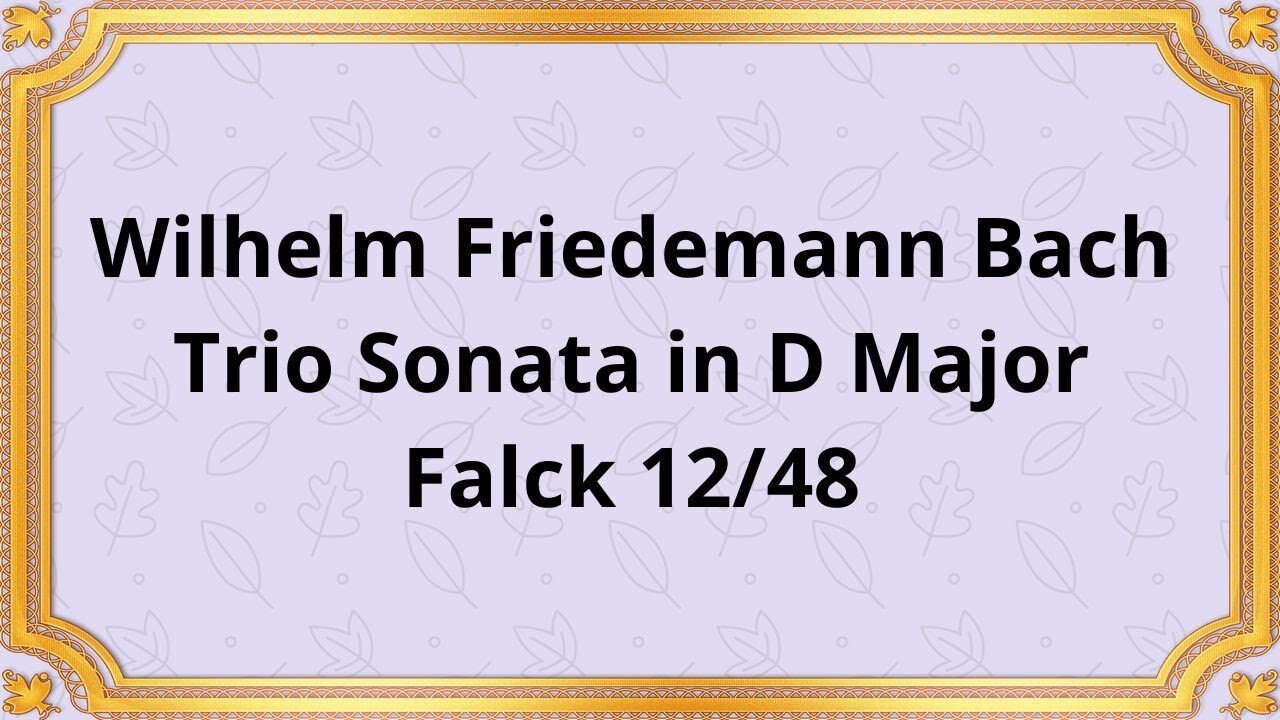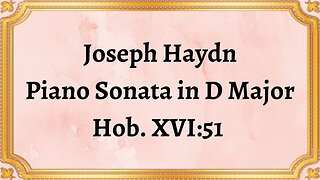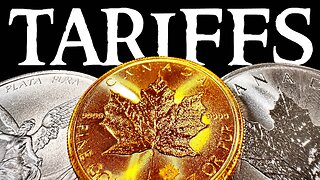Premium Only Content

Wilhelm Friedemann Bach Trio Sonata in D Major, Falck 12/48
#WilhelmFriedemannBach #TrioSonata #DMajor #Falck1248 #ClassicalMusic #MusicalComposition #BaroqueMusic #MusicHistory #MusicAppreciation #ChamberMusic
Gerhard REHM & Eberhart DASCHLER, Flutes
Holger RUCK TESCHLER, Bassoon
Friedrich DOLD, Harpsichord
The world of classical music is adorned with sublime compositions that have stood the test of time. One such masterpiece is the Trio Sonata in D Major, Falck 12/48 by Wilhelm Friedemann Bach. This remarkable piece showcases the brilliance of Bach's musical genius and offers a captivating journey through harmonies and melodies.
Wilhelm Friedemann Bach, the eldest son of the renowned Johann Sebastian Bach, was a prolific composer during the Baroque era. The Trio Sonata in D Major, Falck 12/48 was likely composed in the early 1750s. This period was marked by a transition from the Baroque style to the emerging Classical style, and this composition reflects a fusion of both.
The Trio Sonata in D Major, Falck 12/48 is composed for three instruments: two violins and basso continuo. It consists of four movements, namely Allegro, Andante, Menuetto, and Presto, following the traditional sonata da chiesa structure.
The Allegro movement sets the tone with its energetic and lively character. The intertwining melodies of the violins create a sense of playful dialogue, while the basso continuo provides a solid foundation.
The Andante movement offers a contrasting mood, characterized by its serene and introspective nature. The delicate melodies of the violins weave together, evoking a sense of tranquility and emotional depth.
The Menuetto, a dance-like movement, brings a touch of elegance and grace to the composition. The rhythmic interplay between the instruments adds a lively and spirited element to the piece.
The final movement, Presto, showcases Bach's virtuosity and technical prowess. It is a fast-paced and exhilarating movement that demands precision and agility from the performers.
The Trio Sonata in D Major, Falck 12/48 exhibits a wide range of emotions throughout its movements. From the exuberance and joy of the Allegro to the introspection and serenity of the Andante, listeners are taken on an emotional journey. The Menuetto adds a sense of lightness and celebration, while the Presto leaves a lasting impression with its spirited and invigorating energy.
Conclusion:
The Trio Sonata in D Major, Falck 12/48 by Wilhelm Friedemann Bach is a testament to the enduring beauty and complexity of classical music. Its historical significance, structural elements, and emotional impact make it a captivating piece that continues to enrapture audiences to this day. Whether you are an avid classical music enthusiast or a newcomer to the genre, immersing yourself in the harmonies of this composition is an experience that is sure to leave a lasting impression.
You have the opportunity to support the channel:
https://destream.net/live/RadSiarAl/donate
https://www.buymeacoffee.com/6355radsiaral
-
 6:07
6:07
Classical music_Music Inspiration
9 days agoJoseph Haydn Piano Sonata in D Major, Hob. XVI:51
401 -
 1:20:47
1:20:47
Redacted News
2 hours agoMexico CAVES to Trump over tariffs, USAID Shutdown, & Zelensky loses $200 billion | Redacted Live
77.1K144 -
 LIVE
LIVE
Revenge of the Cis
3 hours agoEpisode 1439: Holy Guacamole
2,409 watching -
 1:01:50
1:01:50
In The Litter Box w/ Jewels & Catturd
1 day ago1 TRILLION! | In the Litter Box w/ Jewels & Catturd – Ep. 733 – 2/3/2025
51.3K26 -
 1:38:44
1:38:44
The Quartering
4 hours agoTrump's Tariffs Already Work, Blackhawk Pilot Coverup, DNC Makes Insane David Hogg Appointment
81.1K72 -
 LIVE
LIVE
Dr Disrespect
6 hours ago🔴LIVE - DR DISRESPECT - TARKOV - ZERO TO HERO RAIDS ONLY
3,505 watching -
 1:13:51
1:13:51
Candace Show Podcast
4 hours agoEXCLUSIVE! Did Ryan Reynolds Extort Hollywood Execs? | Candace Ep 143
112K106 -
 2:01:42
2:01:42
Darkhorse Podcast
5 hours agoA Germ of Truth: The 263rd Evolutionary Lens with Bret Weinstein and Heather Heying
33.4K10 -
 9:37
9:37
Silver Dragons
4 hours agoGoodbye Cheap Silver - How the Tariffs Will Change Stacking Forever
20K -
 37:33
37:33
CryptoWendyO
4 hours ago $2.68 earnedWORST DAY IN CRYPTO HISTORY $10 Billion in Liquidations!
32.9K7